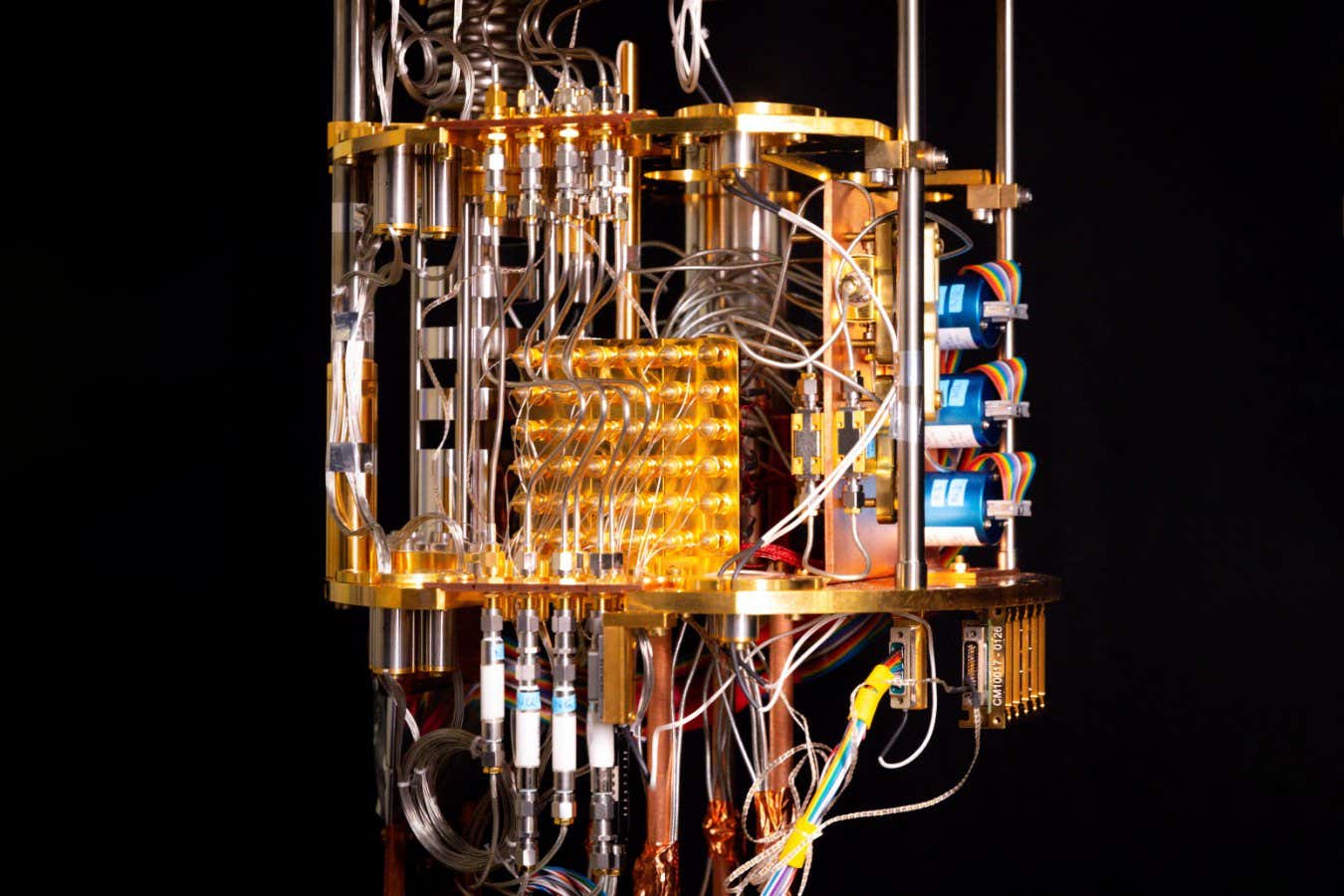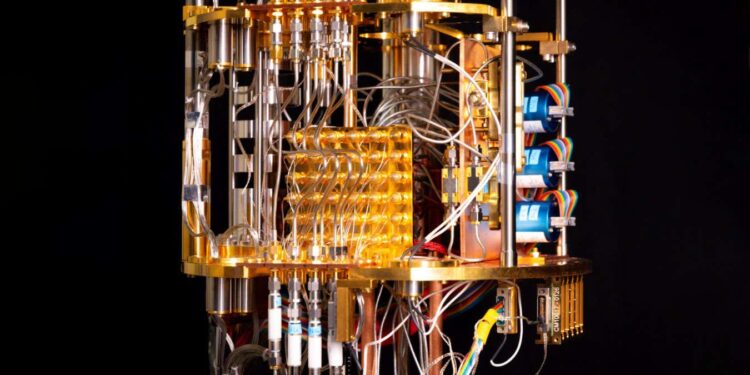
Could a new approach help make quantum computers error-free?
Nord Quantique
A Canadian quantum computing start-up claims its new qubit will enable much smaller and cheaper error-free quantum computers. But getting there will be a steep challenge.
To correct its own errors, a traditional computer saves duplicates of information in multiple places, a practice called redundancy. For quantum computers to achieve their own version of redundancy, they typically require many additional quantum bits, or qubits – hundreds of thousands of them.
Now, Julien Camirand Lemyre at Nord Quantique and his colleagues have created a qubit that they say will let them slash that number to mere hundreds. “The basic underlying idea behind our hardware is… having qubits that have intrinsic redundancy,” he says.
There are several competing versions of qubits, such as tiny superconducting circuits and extremely cold atoms. Nord Quantique’s qubit is a superconducting cavity filled with microwave radiation: the particles that carry this radiation, photons, are trapped inside the cavity where they bounce back and forth, and information can be encoded into their quantum states.
Similar qubit designs have been built before, but the new one is the first with “multimode encoding”. This means that the researchers used several of the photon’s properties at once to store information – an encoding method that makes that data more resilient to common quantum computer errors.
Victor Albert at the University of Maryland says that quantum error correction requires either more qubits – so that information can be stored in a group of connected qubits rather than a single one, protecting the system from any individual qubit’s failure – or for each qubit to be “bigger” in the sense of how information is stored within it.
The new qubit uses the second technique, storing information in a mathematical space that is effectively four-dimensional, he says.
Because of this, Nord Quantique projects that its fault-tolerant quantum computers will be up to 50 times smaller than those that use qubits made from superconducting circuits, like the most advanced ones built to date. Additionally, the company estimates machines built with its qubits will consume just a tenth as much power as these other machines.
However, Nord Quantique has not yet presented data on more than one qubit. Nor has it used its new qubit in a computation, other than to verify that it does in fact support multimode encoding. Many steps and technical challenges remain on the team’s road to quantum computing at scale.
“It is too early to tell whether this approach towards fault-tolerant computation… is intrinsically more advantageous than some of the other approaches pursued,” says Barbara Terhal at the Delft University of Technology in the Netherlands.
Michel Devoret at Yale University says the new work is “an incremental, rather than a groundbreaking, result in the science of quantum error correction”, but it does show the company’s mastery of technical challenges.
Lemyre says they are now working on building more qubits and improving their current design. For example, they want to add “perfecting mechanisms” that will manipulate the information stored within the qubit, as has to happen when a quantum computer is running a calculation. They expect to build a practical quantum computer with more than 100 of their error-resilient qubits by 2029.
Topics:
Source link : https://www.newscientist.com/article/2482057-qubit-breakthrough-could-make-it-easier-to-build-quantum-computers/?utm_campaign=RSS%7CNSNS&utm_source=NSNS&utm_medium=RSS&utm_content=home
Author :
Publish date : 2025-05-29 10:00:00
Copyright for syndicated content belongs to the linked Source.














